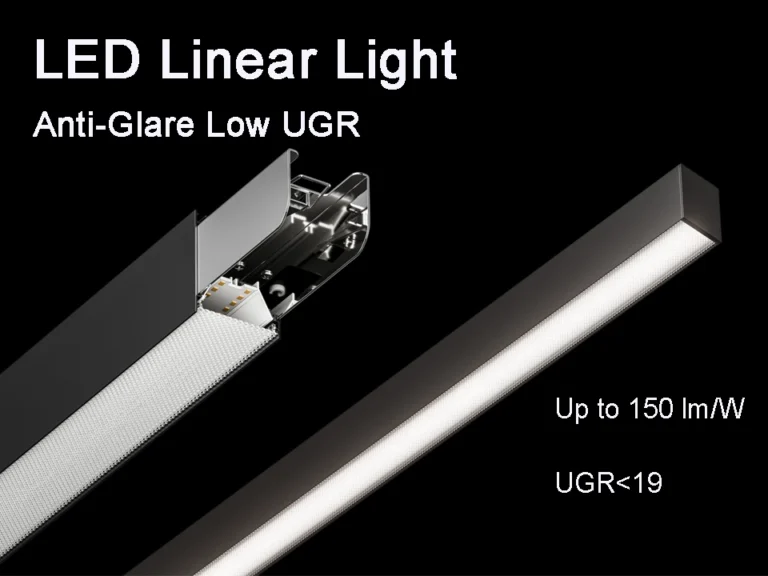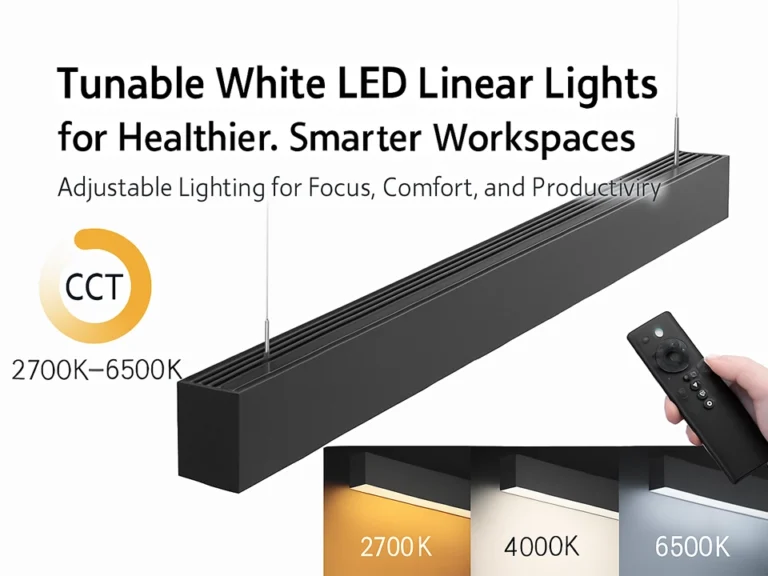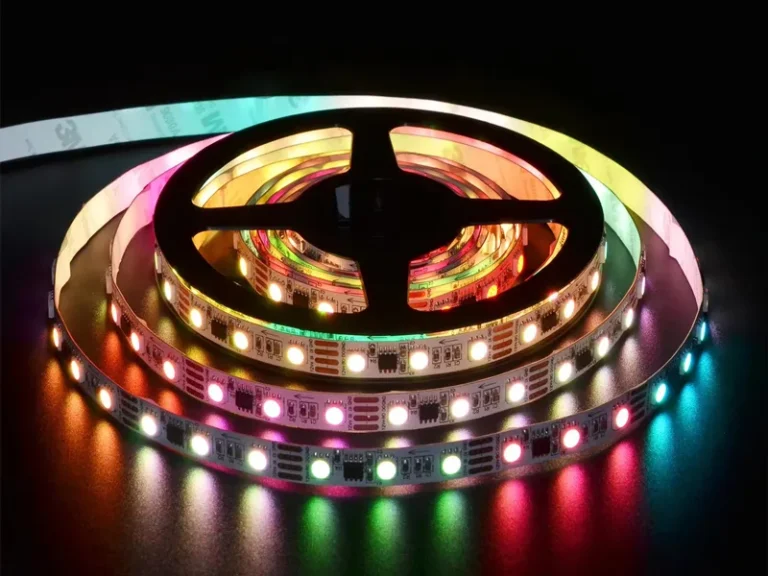Tunable white LED strips, adjustable color temperature LED strips or CCT LED strips are new lighting terms we are hearing more and more. All of these terms refer to an LED strip that can adjust its color temperature, usually in the range of 2700K to 6500K color temperature. It is the function of adjusting white shade and changing color temperature through remote, wired adjustable white LED controller or DMX controller.
In more and more places, you see the white light set to 2700K at one time, then it becomes 4000K, and then it becomes 6500K again. How does this happen? Are there many strip lights with different color temperatures installed behind? No, this is a unique feature of LED strip tunable white.

Ⅰ.What is tunable white LED?
Tunable white lighting technology is defined as the ability to control a light source’s color temperature output. It is also referred to as variable white, dim-to-white, hybrid white, or custom temperature lighting from other manufacturers.
The tunable white LED is usually to integrate multiple LED chips with different color temperatures (such as warm white, positive white or cool white) inside the LED lamp, and accurately control the current of these chips through electronic control circuits. By adjusting the brightness ratio of LED chips with different color temperatures, the overall color temperature can be adjusted. At the same time, by changing the current flowing through the LED chip, the brightness can also be adjusted.
This is either adjusted automatically or manually as desired. In detail, it is about the color temperature of the white tone that the light reproduces. This can be easily adjusted via app or remote control. You can choose from a color spectrum of 2,700 Kelvin (extra warm white) to 6,500 Kelvin (cool white). This gives you the opportunity to adjust the color temperature exactly to your wishes and decide independently which shade of white you need at any given moment. For example 2,800 Kelvin or 4,500 Kelvin etc.
Ⅱ.How do we classify the different white light? And what is CCT?
When you go to the hardware store and choose a light bulb, sometimes they are classified as either warm or cool, daylight, bright white, or soft white. These names are used to specify the color temperature of white that is emitted from the light source. The color of white light can be quantified by referring to its color temperature. To better understand the difference in variable white lights / tunable white lighting, you need to understand what correlated color temperature is:
CCT (Correlated Color Temperature) refers to the color temperature of light, measured in degrees Kelvin (K). The temperature rating directly correlated to what the white light will look like to us humans. Within the LED industry, it is typical to see white LEDs created anywhere between 1800K (candlelight) and 7000K (daylight).
For instance, a light source that has a 3000K rating known as what we collectively call, “warm white” lighting. Warm white light looks very orange and/or yellow. Traditional Halogen and Incandescent lighting is also around 3000K. When increasing the degrees Kelvin, the color will change from yellow to yellowish white to white and then a bluish white (which is the coolest white).
To give you an idea of what CCT means, consider the measurements 1,800 Kelvin and 7,000 Kelvin: the former corresponds to candlelight and the latter corresponds to daylight. When you see a tunable white LED lighting system that features a range within two CCTs, it means that the lighting can run between those two CCTs – and perhaps along them as well, hitting infinite possible CCTs. One key point to remember is that the higher the CCT in Kelvin, the “cooler” white it will yield, emitting a bluish white (the “coolest” white) at the highest CCT in Kelvin.
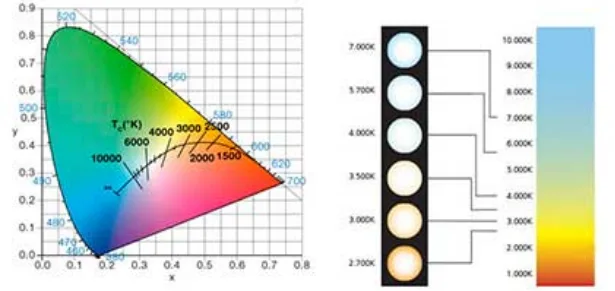
Ⅲ.What are the benefits of Tunable white led strips?
As an advanced lighting product, adjustable white light strips have significant advantages.
1. Energy efficiency
Tunable lights can help you reduce energy costs in your premises, given how they have proven energy-effi cient. This is attributed to the ability of these lights to control the color temperature output of their source. Tunable lights enable energy savings for setting the output where you need it.
2. Advanced Control and Customization
Dimmability: Users can adjust the brightness of the lights according to their needs, providing flexibility and enhancing comfort.
Tunable Color Temperature: The ability to adjust the color temperature from warm to cool light allows users to create the desired ambiance in a space, enhancing aesthetic appeal and mood.
Control Options: With options for both wired and wireless control, including integration with smart home systems, users can easily adjust the lighting to suit their preferences.
3.Enhancing Wellbeing and Productivity
Imitating Natural Light: Tunable lights can mimic the natural progression of daylight, supporting the human circadian rhythm and potentially improving sleep quality and overall wellbeing.
Reduced Eye Strain: The ability to adjust lighting reduces the risk of eye strain, particularly important in workspaces and for activities that require prolonged focus.
4.Versatility and Broad Applicability
Diverse Applications: From residential settings to commercial and industrial spaces, tunable LED lights offer solutions tailored to various needs.
Product Availability: The market now offers a wide range of tunable LED products, catering to different preferences and use cases.

In conclusion, Tunable white lighting provides a more dynamic led white lighting experience with CCT color changes between “warm” and “cool”. You can use it to simulate natural daylight and circadian rhythms. It can affect people’s physiological and psychological state, providing a warming or cooling effect for your environment.
CCT changing led tunable lighting makes your white color temperature less permanent, and customizing or personalizing your lighting experience becomes a reachable possibility.
Ⅳ.What is the difference between tunable white and dim to warm? What is a dim to warm Tunable white led strips?
Traditional dim to warm technology lighting provides a high color temperature at full output (typically 2700K to 3000K), and gradually reduces during dimming to a lower color temperature, even down to near 1800K, which is similar to the warm tones of candlelight.
It is important to note that in traditional dim-to-warm technology lighting, lowering the current results in two effects: a reduction in brightness and a warming of the light color. The adjustment of light brightness and color temperature are directly related and cannot be controlled independently.

LED dim to warm lighting system can reduce light output without changing color. The dim to warm LED is dimmed by changing the current or by PWM (Pulse Width Modulation).
Dim to warm LEDs use a combination of white light and amber light to achieve the 1800K to 3000K warm dim color temperature change.
LED tunable white can accommodate a wider range of color temperatures than LED dim to warm, allowing you to adjust any color temperature between warm white and cool white.
More comparison you can check from below diagram:
| Dim to warm | Tunable White |
| Dims like an incandescent, from cool to warm | Control your color temperature, while maintaining brightness |
| Color temperature becomes warmer as you dim,from 3000K or 2700K to 1800K | Adjust from 6500K to 1800K |
| Perfect for retrofit or remodel; no rewiring | Great for new construction; 3 wires with dimmers or DMX |
| Mimics incandescent and candlelight | Mimics a blazing sunset at full brightness 2000K |
| Great for full home, outdoor, retail and commercial spaces | Great for full home, outdoor, retail and commercial spaces |
Ⅴ.How to control tunable white LED strip?
To adjust dual white led color or change CCT of led, you need controllers with two white light outputs (W-, W-/CW-, WW-) and controls that are compatible with color temperature tunable modes.
Usually, these controls use one function to change the CCT color temperature and another to change the intensity. You can also find separate functions to adjust the warm LED and the cool LED separately, which makes it easier to achieve your desired CCT.
Below let us explain by 4 types common controll way:
1). PWM Tunable White Dimming:

2). 0-10V Tunable White Dimming:
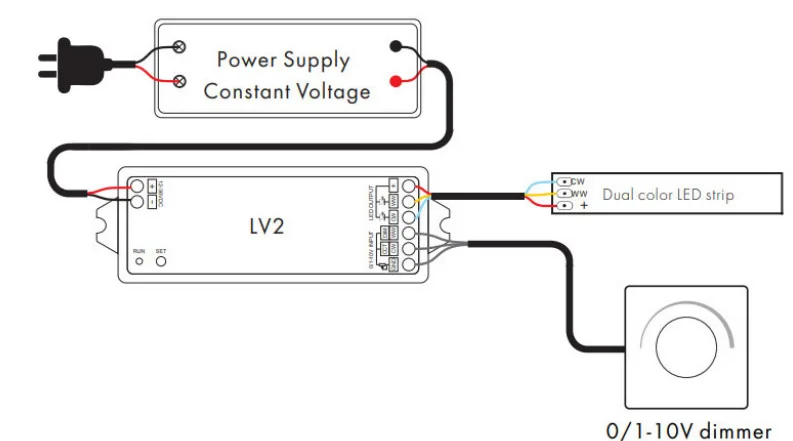
3). DALI Tunable White Dimming:

4) . DMX Tunable White Dimming:

